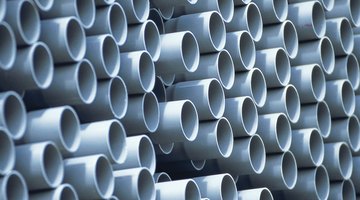PVC to Copper Pipe Connection Is Leaking
PVC pipe is a good durable material for a wide variety of drain, water and ventilation applications, making it a favorite choice for many newer plumbing installations. When linking up a new PVC install with older copper pipes, there are a few different connection methods that are often used. Understanding how copper and PVC pipe are connected is key to repairing leaks at the coupler.
Rubber Couplers

Rubber couplers are often used to join PVC to copper. They consist of a piece of rubber tubing with each end sized to the PVC and copper pipe and a pair of hose clamps that secure the coupler to the pipes. These are frequently used for joining PVC and metal pipes in drains, water supply lines and other low-pressure installations.
Rubber Coupler Leak
Rubber couplers can leak when either the PVC or copper pipe is not properly secured, and the weight of the pipe is resting on the coupler. Over time, the rubber coupler can become misshapen, leading to gaps between it and the pipes. Remove and replace the coupler, and support both the PVC and copper pipe using pipe supports or straps.
Transition Fittings
Copper and PVC can be joined using what is known as a transition fitting, which is a PVC coupler with a large grip for hand tightening. The PVC pipe is typically cemented on one end, and the copper pipe is held into the coupler by a compression fitting that tightens down on the copper.
Transition Fitting Leaks
Unfortunately, transition fittings that have been cemented to the PVC end of the PVC pipe and copper coupling cannot simply be removed. PVC cement, once applied, is more aptly called a weld. The only way to fix a leak at a PVC transition fitting is to loosen the fitting on the copper end, and cut it free from the PVC end. The whole assembly must then be replaced and, if the PVC and copper pipes no longer meet, additional couplers and extension pieces must be added.
References
Writer Bio
Andrew Leahey has been a writer since 1999, covering topics as varied as technology how-to guides and the politics of genetically modified organisms to African food supplies. He is pursuing his J.D. while renovating an 1887 farmhouse located in the New Jersey Pine Barrens.
Photo Credits
- Comstock/Comstock/Getty Images
More Articles



